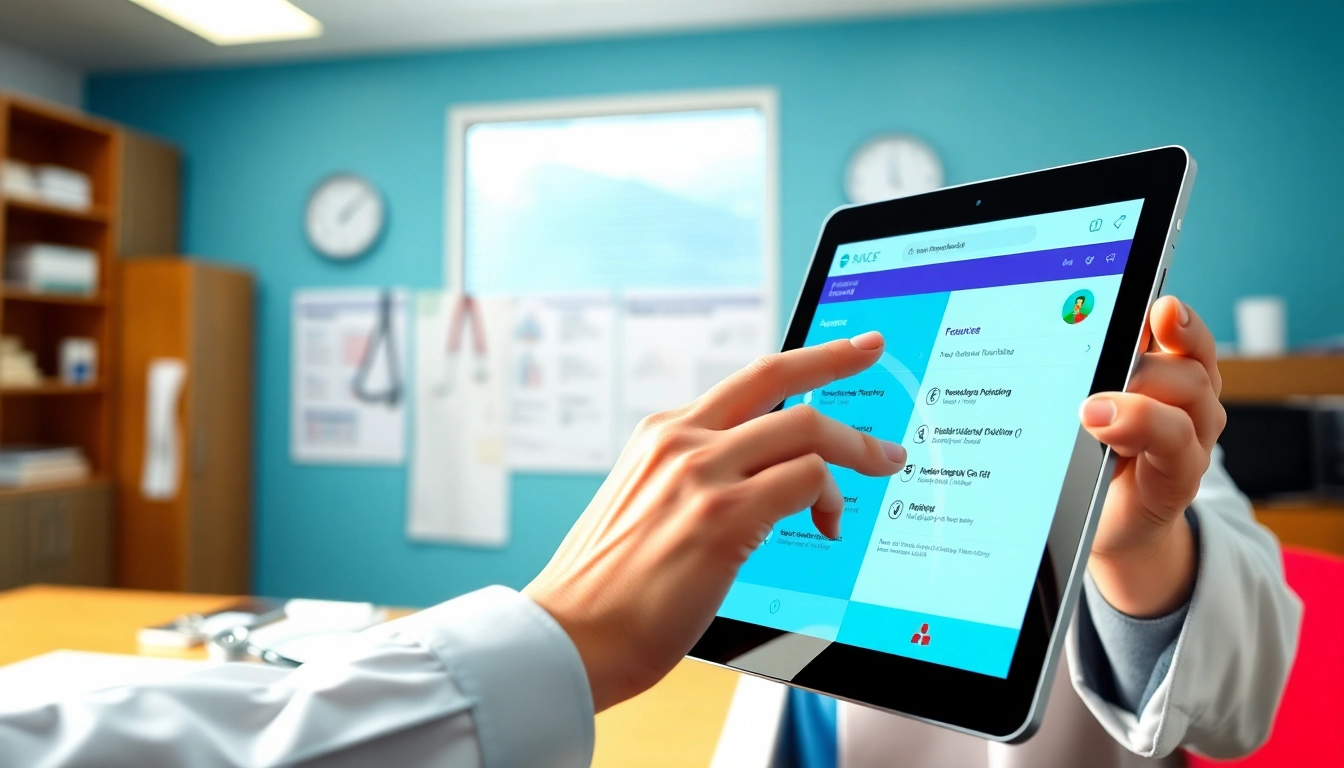Understanding Top Rated Prescription Applications
In today’s fast-paced healthcare environment, technology has become a central pillar in transforming the medical landscape. From better communication between healthcare providers and patients to improved medication management, prescription applications have emerged as invaluable tools. These advanced systems streamline various aspects of the prescribing process, enhancing efficiency and ensuring that patients receive the care they need. In this exploration of top rated prescription applications, we will dive deep into their functionalities, advantages, and what makes them stand out in a competitive market.
What Are Prescription Applications?
Prescription applications are digital platforms or mobile apps that facilitate the prescribing, management, and refilling of medications. They serve multiple stakeholders, including healthcare providers, pharmacists, and patients. These applications can aid in:
- Submitting electronic prescriptions (e-prescribing) directly to pharmacies.
- Providing medication information and reminders to patients.
- Facilitating communication between patients and healthcare professionals.
- Supporting prescription tracking and refill requests.
Given their ability to enhance communication, reduce errors, and simplify workflows, prescription applications have become a cornerstone in modern healthcare delivery.
The Benefits of Using Technology in Prescribing
Integrating technology into the prescribing process offers numerous benefits:
- Improved Safety: Automating prescriptions minimizes the risk of human errors, such as illegible handwriting or miscalculations.
- Time Efficiency: Streamlined processes save time for healthcare providers, allowing them to focus on patient care rather than paperwork.
- Better Patient Engagement: Patients can actively participate in their treatment plans by receiving reminders and tracking their medication adherence.
- Cost Savings: Electronic prescriptions can reduce administrative costs for healthcare organizations and lower the overall price of prescriptions through paperwork reduction.
How Top Rated Prescription Applications Improve Patient Adherence
Patient adherence to prescribed medication regimens is a crucial factor in successful treatment outcomes. Top rated prescription applications contribute to adherence by:
- Sending Reminders: Automated alerts remind patients when it’s time to take medication or refill their prescriptions.
- Tracking Performance: Many applications allow users to log their medication usage and track progress, providing insights into adherence patterns.
- Educational Resources: Providing information on the importance of the medication and potential side effects can empower patients to follow their prescribed treatment.
- Facilitating Communication: Secure messaging features help patients reach out to their healthcare providers, addressing any concerns without delay.
Key Features to Look For in Top Rated Prescription Applications
User-Friendly Interface and Design
An intuitive and user-friendly interface is crucial for ensuring that patients and healthcare providers can efficiently navigate the application. Key attributes include:
- Simple Navigation: Clear pathways for finding key functions, such as prescription refills and medication information.
- Visual Appeal: A clean design that minimizes distractions and enhances focus.
- Accessibility Features: Consideration for individuals with disabilities, such as voice commands or text resizing, to ensure inclusivity.
Integration with Healthcare Providers
Seamless integration with electronic health record (EHR) systems enhances the application’s utility. Features to consider include:
- Prescription Synchronization: Automatic updates to patients’ records, ensuring that healthcare providers have the most current information.
- Interoperability: The ability to communicate across various health systems and applications to provide a holistic view of patient health.
- Secure Data Sharing: Ensuring patient data is protected while allowing for efficient information transfer between authorized parties.
Security and Compliance Standards
Security is paramount when dealing with sensitive health information. Look for applications that adhere to:
- HIPAA Compliance: Ensures that patient information is handled safely and confidentially.
- Data Encryption: Protects data during transmission and storage, safeguarding against breaches.
- Regular Security Audits: Frequent assessments of systems to identify vulnerabilities and maintain robust security practices.
Comparative Analysis of Top Rated Prescription Applications
Evaluation Criteria for Selection
It is essential to evaluate prescription applications on various criteria to determine their effectiveness. Key factors include:
- Functionality: Does the application provide all essential features needed for effective prescription management?
- User Satisfaction: User reviews and feedback provide insights into experiences and common issues.
- Affordability: Analyzing the cost of the application relative to the services it offers can provide a clearer picture of value.
User Reviews and Feedback
User feedback can uncover the real-world application and effectiveness of prescription applications. Considerations may include:
- Real User Experiences: What do users love about the app? What common pain points arise?
- Community Ratings: Platforms that aggregate user reviews can influence future users’ decisions.
- Support and Responsiveness: Evaluate how quickly developers address user concerns and bugs.
Cost vs. Value Assessment
When assessing cost versus value, consider both the direct and indirect benefits of using the application. Includes:
- Subscription Fees: Understanding various pricing models enables budget planning.
- Return on Investment (ROI): Evaluate how much time and money the application saves relative to its cost, focusing on efficiency gains.
- Long-Term Benefits: Assess potential long-term benefits such as improved patient adherence and health outcomes.
Best Practices for Using Top Rated Prescription Applications
Setting Up Your Prescription Application
To maximize the benefits of a prescription application, users should take care in the initial setup process:
- Accurate Information Input: Ensure all personal and medication data is accurately entered.
- Familiarization: Spend time exploring the features of the application to utilize it effectively.
- Connecting with Providers: Integrate with healthcare providers where possible for a seamless experience.
Tips for Effective Medication Management
Utilizing the application effectively requires conscious strategies:
- Regular Monitoring: Check your app frequently to stay informed about medication schedules and updates.
- Task Reminders: Utilize reminders for both medications and pending refills to avoid lapses.
- Update Information: Keep track of changes in prescriptions or health conditions and update the app accordingly.
Common Pitfalls to Avoid
Awareness of potential issues can help users navigate any challenges:
- Over-Reliance on Technology: While applications are useful, they should not replace regular consultations with healthcare providers.
- Ignoring Notifications: Dismissing alerts can lead to missed doses; staying engaged is crucial.
- Neglecting Data Security: Always prioritize secure login methods and regularly update passwords.
Future Trends in Top Rated Prescription Applications
The Role of Artificial Intelligence in Healthcare
The integration of artificial intelligence (AI) is transforming how prescriptions are managed. AI can provide:
- Personalized Recommendations: Tailored suggestions based on patients’ health histories and preferences.
- Predictive Analytics: Forecasting potential medication adherence issues before they arise.
- Enhanced Decision Support: Assisting healthcare providers in selecting the most appropriate medication choices.
Patient-Centric Innovations
As the healthcare landscape evolves, the emphasis on patient-centric designs will transform prescription applications into:
- Interactive Platforms: Encouraging patient engagement through gamification and social features to enhance adherence.
- Holistic Healthcare Solutions: Incorporating lifestyle tracking, dietary recommendations, and more to provide integrated patient care.
- Expanded Communication Features: Enhancing communication pathways between patients and healthcare providers for improved consultations.
Regulatory Changes Impacting Prescription Applications
As technology in healthcare continues to advance, so too will the regulations governing it. Key areas of focus include:
- Prescription Regulations: Updating guidelines for electronic prescriptions to ensure patient safety.
- Data Privacy Laws: Adapting to new regulations that protect user data while promoting innovation.
- Telehealth Integration: Embracing the rise of telehealth and the accompanying legislative changes for prescribing through digital platforms.



